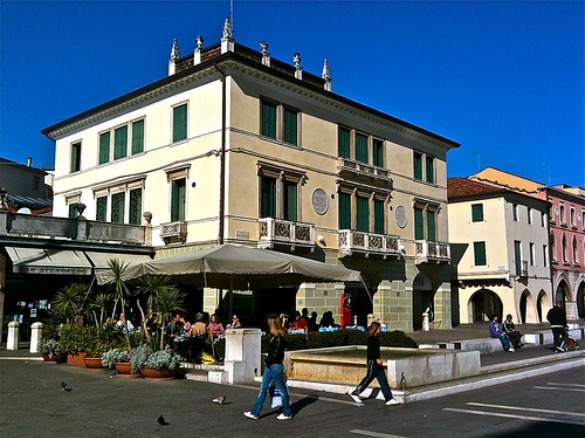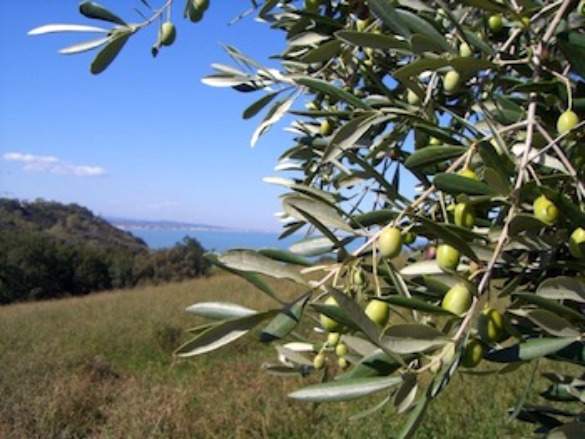On my list of perfect places in the world is the Adriatic coast of Italy. With the notable exception of Venice, there aren’t too many places on the eastern coast that feature too highly in the guidebooks. Perhaps that’s why I love it so much. The best time to visit, in my humble opinion, is in the fall, when the summer holiday tourists have all gone home and the wharves are home only to the fishermen.
For most people, a trip to the Adriatic without a stop in Venice would be unfathomable, but when you’re tired of the tourists and the over-priced gelato, why not head south and explore the little villages that are strung like pearls along the pebbled coast; after all, the best places often don’t make the guidebooks. Here are five stops that are definitely worth the effort.
[social]
Mestre

The train coming into Italy through the Austrian Alps stops here just before rolling into Venice. Everyone goes to Venice, but very few hop off one stop early and explore the delightful boroughs that surround the city of islands. Mestre’s rich local culture includes a string of festivals every fall, including European equestrian events, food festivals and church celebrations interspersed with the regular local fresh and artisan markets that contribute so generously to Italy’s charm.
Also in it’s favor: Mestre is far cheaper than Venice and offers a variety of accommodations, ranging from campgrounds to five star hotels (check out the youth hostels within walking distance of the train station). This makes it a great base to explore Venice from, hop on one of the many buses headed into the city, or pay a little extra for a designated shuttle.
>> Find flights to Venice and learn about visiting Venice on the cheap
[social]
Ravenna

With the old town about five miles in from the coast, Ravenna is worth far more than it’s “worth a day trip if you have time” rating in one guidebook. The warren of cobbled pedestrian streets sprinkled with flower and food vendors, the selection of quiet, unobtrusive museums built around individual archeological treasures, the diverse collection of churches spanning centuries of Catholic history and the quaint corner cafes just begging to provide the lunch memory of a lifetime are worth the trip alone.
And then, there are the mosiacs. Peek back into Roman history and be amazed at the art that has stood the test of time in the form of floors, wall panels and church ceilings. Ravenna’s most famous son deserves a visit as well. Dante Alighieri, author of the Divine Comedy is interred in Ravenna, and his tomb is a major landmark. Following a visit to the tomb, the natural “next stop” is the cathedral of San Francesco, which children especially seem to love for the fish swimming above the submerged mosaics beneath the alter. Drop a coin in the slot to turn the light on and see the fish. Adults may be less enchanted by it though. The carved wooden ceilings and tiled floors are beautiful, but any church with electric candles, turned on by the clank of a coin in the coffers is lacking that elusive “something” that makes medieval cathedrals magical.
>> Find hotels in Ravenna
Chioggia

Some people might think of Chioggia as Venice’s “ugly step sister.” A little further down the coast than Venice, it’s the quieter, gentler step sister as well. This quaint little fishing village is a picture postcard of the “real Italy.” Weekday morning find the wharf lined with stalls for a daily fish market; arrive early enough and you might even get to help unload the morning’s catch.
Have lunch at one of the many inexpensive seafood restaurants lining the docks, frequented mainly by fishermen returning from their pre-dawn excursions. Spend a long Adriatic afternoon watching the local folks crank in their big square dip nets full of fish along the piers, or stand waist deep in the sea tossing butterfly nets with perfect precision. Whatever you do, don’t miss the passegiata, an Italian institution. It’s the evening promenade through the main square and along the side streets. Residents will turn out to see and be seen as they sip drinks and gossip about the local goings on.
You’re also sure to notice the big blue “clock thing” in the center of town. It’s an astrolabe, one of the oldest in Europe and worth a stop on any tourist itinerary. If you’ve visited Venice and are making your way down the coast from the “top” of the Adriatic, Chioggia makes a nice stop for your first walk on a sandy beach to dip your toes in the sea. It’s accessible by bus, or by train, and if you visit in the summer you can also take a tourist boat directly to Chioggia from San Marco Square in Venice.
>> Find hostels in Chioggia
Cesnatico

The lure of the picturesque port that is the center of this idyllic town is undeniable. With an array of reconstructed boats reflecting the maritime history of the Adriatic it’s impossible not to spend several hours on the wharf, reading the plaques and wishing for a time when goods moved quietly in and out of ports like this all along the coast in boats built specifically for the needs and conditions of this sea. The hull designs, the rigging and even the colorful painting and “eyes” decorating the ships are unique to the region and each has a distinct purpose and story.
Cesenatico is another one of those captivating places that doesn’t make the big name guide books, but that I wouldn’t have missed for the world. Stay in one of the picturesque inns on a tree lined side street, or camp just outside of town and listen to the waves crash on the beach all night long. Buy a gelato, walk the wharf, talk to the fishermen, and spend hours strolling the pebbled beach north of town talking to the locals. Cesnatico is an easy 30 minute train ride from Rimini, or, you can take the bus. For the really adventurous, rent a car and drive along the coast.
>> Find a hostel in Cesenatico
Parco San Bartolo

Most, but not all, of the Adriatic Coast of Italy is flat. The highest sea cliffs on the Italian Adriatic can be found in Parco San Bartolo, between Gabicce and Pesaro. A strikingly different view of the sea is available from their craggy edges. If you crave natural beauty and solitude after the bustling sea of humanity that is the northern cities, take a day or two to relax in this park.
Hike down one of the many steep paths to the beaches. Plan a walking tour between villages. Stay in a guest house on a farm, or enjoy the incredible view from your campsite at Camping Paradiso, high above the sea. Warning: if you’re cycling, it’s one big push to the top and a daily 15 mile round trip down the hill from the campground to the nearest town with supplies, but it’s so worth it. Take a train or bus to Pesaro and then arrange a taxi ride to one of the smaller towns within the park. Once you get there, do like the locals, and walk.
If you’re planning an Italy trip, stop by our WhyGo Italy site, where you can find tips on accommodation in Italy, airfare to Italy or Italy rail. Whether you’ll visit Venice, Rome, Florence or further off the beaten path, it’s your ultimate Italy resource. Read more about Italy here:
- Italy Trip Planning: 24 Resources You’ll Want
- 10 Lesser-Known Places to Visit in Italy
- Eat Your Way Around Rome
- 8 Small and Beautiful Italian Islands You’ve Probably Never Heard Of
Photos by: Fabio-Miami, sjmcdonough, Massimo Norbiato, Mazzaq-Mauro Mazzacurati, final photo by the author and may not be used without permission